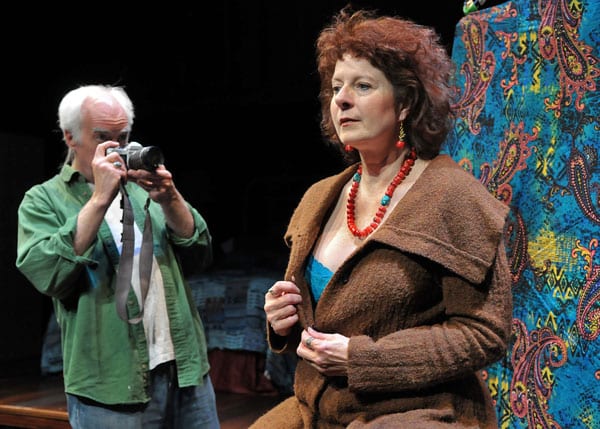How does self-image affect your relationships and color your past? How can we appreciate different expressions of physicality while maintaining a respectful, artistic distance? How do you tell your 21-year-old son to stop racking up such high porn bills? These are a few of the questions raised during Body Awareness Week at Shirley State College.
“Body Awareness,” is the first play that Amherst-born playwright, Annie Baker, set in the fictional town of Shirley, Vermont. All three of the Shirley Vermont plays are currently being performed at the BCA courtesy of three different local companies. While the other two, “Circle, Mirror Transformation,” and “The Aliens” are far more minimalist in form, “Body Awareness” makes it points with sharp dialogue.
Baker’s writing chops shine through in this often-hilarious homage to backwoods intellectualism, brutal honesty and familial warmth in its most unexpected incarnations. “Body Awareness” opens the door to an upstate universe of hand-knit sweaters and green tea with dialogue that is both lively and thoughtful, playful yet often painfully charged.
The short of it sounds deceptively quiet: a middle-aged lesbian couple hosts a visiting photographer who specializes in portraits of nude women. Phyllis (Adrianne Krstansky), organizer of Shirley State College’s annual Body Awareness Week, almost immediately becomes enraged at his work and presence. Her partner Joyce (Paula Plum), on the other hand, finds his work fascinating, and when the artist, Frank (Richard Snee), asks her to pose, the resulting clash threatens to unravel the relationship.
The presence of Joyce’s 21-year-old son Jared (Gregory Pember) takes the conflict to another level. Jared lives at home, works at McDonald’s, studies the Oxford English Dictionary and denies with all his strength that he may have Asperser’s Syndrome. Pember is spot on in rendering Jared’s relentless honesty, anti-empathic logic and unintentional humor. His remarks, actions and growth in response to Franks’ residency enhance not only the plot, but the canvas on which we gage the other characters’ actions and emotions.
Plum and Krstansky make a convincing and endearing couple (though ironically, Plum is actually married to Snee in real life); we get just enough of their personal histories and history as a couple to form a satisfying image of their life together. Plum presents a richly nuanced portrayal of Joyce, a high school teacher who was married to a man for ten years and has a haunting past besides. Krstansky is deceptively mellow as Phyllis, a smiling psychology professor who defends Body Awareness week as if it were her own daughter. Snee brings photographer, Frank Bonitatibus, to life almost effortlessly: though his presence ignites the main action of the play, his definitive maleness and controversial presence is neither hackneyed nor stereotyped. Every character in this play dares us to make assumptions about them, and then quietly—with a laugh—steps outside of our expectations.
Under Paul Daigneault’s fluid, unforced direction Phyllis leads us through the week as if we are students in a scarcely populated college auditorium. Days and nights blend easily and slowly into each other to Nathan Leigh’s mellifluous score, and we are given just enough time to digest what has happened in the day. The design team—Cristina Todesco’s scenic design, Jeff Adelberg’s lighting, and Bobby Frederick Tilley II’s costuming—certainly deserves an extra hand for creating the impeccable depiction of the house, characters and time of day.
This visit to Shirley is well worth the trip.
Presented by Speakeasy Stage Company, “Body Awareness plays at the BCA through November 20.


“…and when the artist, Frank (Richard Snee), asks her to pose, the resulting clash threatens to unravel the relationship.”
Actually, Joyce asks him if she can pose for him…a much more interesting plot development.
Hmm. I think part of the point of that scene is that the whole process is kind of convoluted; we’re not exactly sure who suggested it. At least, that’s what I remember from seeing it once and not reading the script. Joyce asks him if he can take a family portrait, and he says he doesn’t do them . . .
I think the reason I don’t remember that particular part clearly is because I disagree that it is a “much more interesting plot development.” The interesting part is that she has to make a decision. It’s a decision she would have to make no matter who proposed posing. Frank, in sync with his character, isn’t terribly concerned whether she does it or not; he does not counterbalance Phyllis by a longshot; I think that that character quality is what lays the foundation for the plot development and development of Joyce’s character, not necessarily the act of asking. The counterbalance comes from Joyce herself, and that’s what interesting.